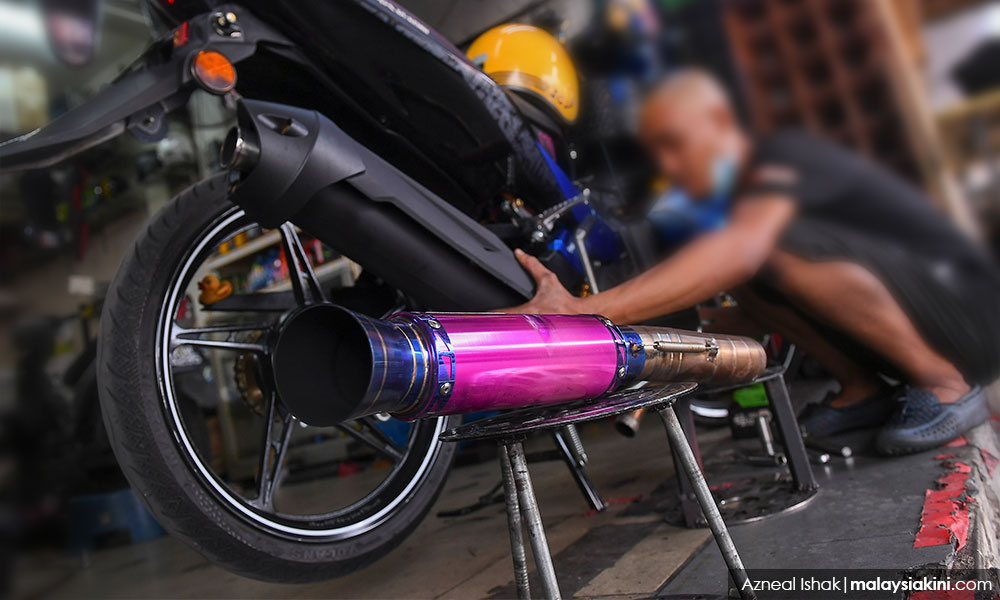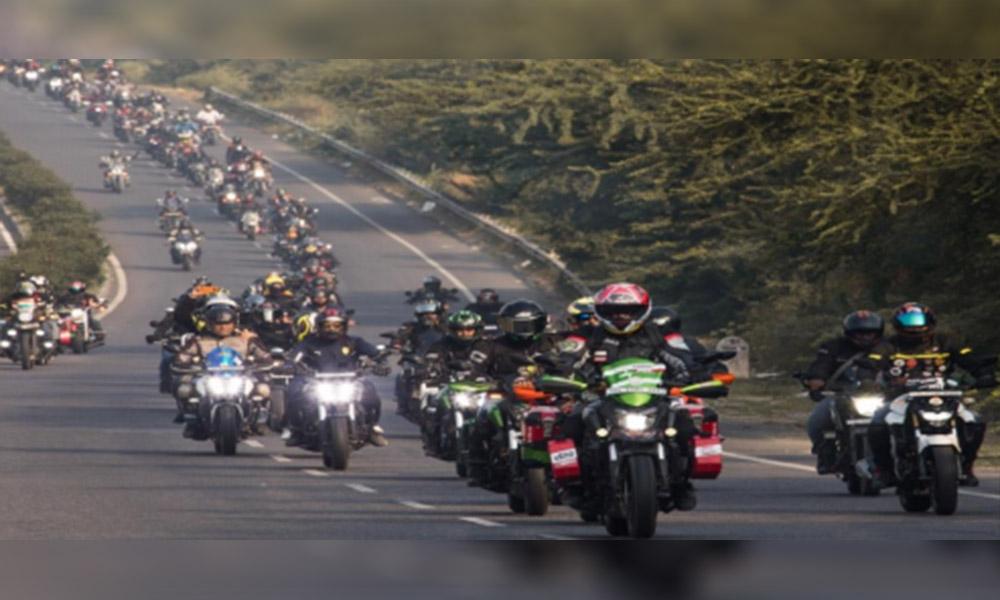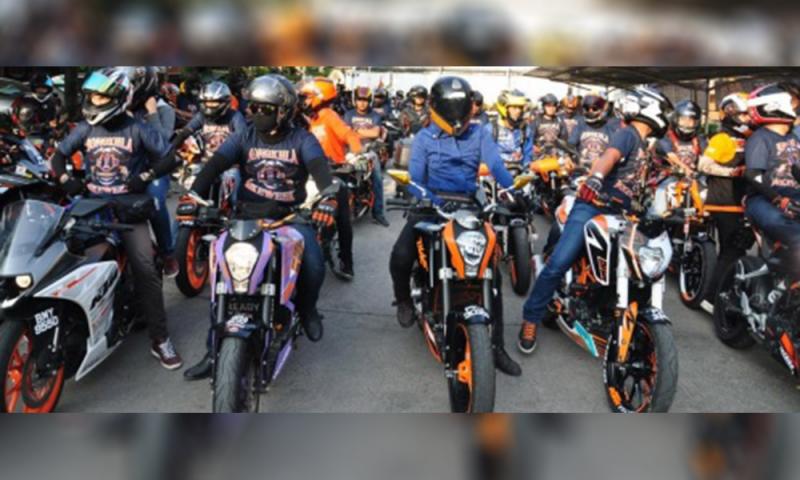LETTER | Bikers' dilemma deserves national attention and resolve
LETTER | The ongoing crackdown by enforcement agencies on bikers nationwide has triggered a wave of silent protest, fears, and unearthed deep concerns.
Biking in Malaysia has, like in all other progressive and developed countries, becoming a means for economic engagement as well as a leisure activity.
Just like golfers and polo enthusiasts who love their sport or leisure activity, bikers look forward to their weekends and public holidays to ride together on medium and long haul road trips.
In fact, the motorbike population in Malaysia that registered almost 13 million vehicles in 2019 had a market value of RM3.4 billion. That is an awful good economy for the country.
With 83 percent of Malaysian households having at least one motorcycle each, it also makes motorbikes the second most popular mode of transport in our country.
Hence the actions by the authorities, though well-meant to track down a small portion of habitual lawbreakers and for a variety of nonconformance to standards, trigger concern among a sizeable proportion of the population nationwide.
Before we can appraise the dilemma faced by the bikers and the frustrations experienced by law enforcers as well as public perceptions about bikers, we need to understand the problems from a holistic perspective.
There are four paradigms that demand inspection. These are:
- Road safety and road conditions
- Motorbike technologies and improvements
- Education and awareness
- Penalties and enforcement
1. Road safety and road conditions
Away from the sight of motorists travelling in the comfort of their air-conditioned vehicles is where the real challenges unfold for bikers. Bikers have been putting up with hazardous road safety conditions for a long time. These include:
Narrow and poorly planned/maintained dedicated bike lanes have caused numerous accidents that largely go unreported. Bikers have that steel in them to get up, pick their bikes and go.
After all, to try and claim from insurance is perhaps, even more, a nightmare and serious downtime that bikers cannot afford especially when the machine is for their bread and butter fulfilment.
The unsafe conditions include:
- Potholes not patched up in quick time.
- Slippery tarmacs with water retention and moss.
- Lanes with fallen branches, stones, loose gravel, screws and debris.
- Poorly lit lanes.
- Lack of adequate signage especially along dedicated bike lanes along major highways.
In Malaysia, the "road culture" is one where smaller vehicles have to give way to bigger vehicles. This counter-culture poses immense dangers to bikers including piling unfair demands on them. The problems and dangers are further aggravated with:
- Motorists using mobile phones while at the wheels.
- Overloaded lorries speeding with spilling sand and gravel.
- Retread tires from commercial vehicles peeling off at high speed and littering the roadways.
- Lane cutting at high speed and/or without giving adequate warning and using the appropriate signal lights.
- Motor vehicles cutting in and out of emergency lanes that are usually used by bikers.
- Speeding vehicles on the farthermost left lanes make riding on these lanes very risky.
Bike size variations and incompatibility
As much as car owners dream of buying better cars as they upgrade themselves in life, bikers too cherish such dreams of owning bigger machines. In fact many of our kap chai bikers work hard and safe frugally with the hope of buying at last a second-hand bigger bike someday in the future.
The steady increase in the number of bigger bikes in the country poses yet another problem. Many of the existing and even newer bike lanes are not cut to measure for the bigger machines.
- As smaller bikes negotiate the narrow bike lanes, the bigger machines hardly can ride through safely.
- Bigger bikes have to slow down on these small lanes struggling to maintain a friction zone over long stretches. This is bad for the machine and also causes traffic pile-ups and congestions as the smaller, leaner bikes do not have the safe space to overtake.
- In the event of a road mishap, there is hardly enough space to pull over to the side safely and allow other bikers to pass.
Lack of adequate planning and shelter from the elements
Given our inclement weather of intermittent thunderstorms, rain and the monsoon season, the absence of sufficient shelters along bike lanes, city/country roads/highways makes riding a high risk factor for bikers.
Hence it is not uncommon to find bikers taking emergency shelter under flyovers and bridges often posing serious risks to them and passing motorists. Even though the law prohibits such shelter taking, riding in bad weather is just as dangerous for bikers.
Defective, poor quality control and rare crackdowns on fake spare parts
Bikers have no idea nor have an easy, convenient means to qualify the spare parts being retailed. These days it would take a specialist to differentiate a genuine part from a fake or substandard product.

Unsuspecting bikers are also easily swayed by cost factors and often end up buying essential spare parts like brake discs, brake pads, bulbs, rims and even tires that do not meet minimum safety standards and often fail to function while riding. Yet do we still hold them responsible upon inspection?
2. Motorbike technologies and improvements
These past thirty years have seen great innovations and technological improvisations made easily available for bikers in the market place.
Manufacturers and importers pay the duties on these products to the government and armed with attractive marketing methods to entice bikers, some of the factors that need to be considered are:
- It is a fact that gone are the days where bike manufacturers pack all the improvisations and improvements when marketing new bikes. Bike manufacturers and their aligned parts manufacturers in fact advertise quite aggressively on how one can upgrade or improvise the performance of the bikes with the "aftermarket" parts and accessories.
- Today, "aftermarket" parts and accessories are well-accepted the world over and form an integral business strategy for many bike manufacturers as well as a good revenue source for governments.
- In Malaysia, many of these parts and accessories available to meet the growing bike culture of sprucing up or beautifying the machines are sold openly and "legally" by retailers as these parts are imported by licenced dealers.
- Tax is also paid to the customs department before reaching the retail chain.
- Sprucing up the bike reflects a sense of belonging and care for the machines. In fact it is a fast growing global culture that keeps the youthful bikers away from getting involved in other more dangerous and illicit activities like consuming drugs.
- Bikers who are willing to spend money to make their bikes look and perform better are known to be very careful riders. And performance is not about speeding. It is about making the machine more responsive and stable performance. This unfortunately is little understood by the non-biking world of people.
The recent clampdown which is now gaining the reputation of being a seasonal and rotational enforcement standard has created much confusion over what is acceptable within the law and what is not. It has given rise to a widespread mood of being victimised among bikers.
Many of these legally purchased improvements and enhancements on bikes do not affect safety but can improve road safety attitudes as well as complement safety. Key considerations that bikers are unhappy about and seek reasonable, acceptable answers are:
- Louder bikes are a safety bonus in the increasingly crowded roadways with well-insulated motor vehicles deeming drivers unable to hear an approaching motorbike.
- Well-lighted bikes with additional, creative features are a safety bonus providing high visibility on the roadways as bikes continue to share the roadways with other private and commercial motor vehicles. The use of fog lights and small spotlights on bikes add to the bikers’ visibility given the fact that motor vehicles all have larger lights.
- Many of the performance-related accessories and parts design built to improve the performance and response of the machines in difficult circumstances are being misunderstood as equating to wanting to speed on the roadways.
- It is a widely held misconception (often promoted by mass media) that performance is not necessarily speeding. On the contrary performance parts and accessories give greater pleasure in ride comfort and enhance bike safety response in addition to extending the life span and durability of bikes.
- Most bikers cannot afford to change their bikes to newer models every few years. Even the loan financers do not make it attractive for bikers as it is otherwise with the motorcar industry.
3. Education and awareness
There is a pressing and urgent need to engage in a sustainable education and awareness programme nationwide.
Such an approach should not only target bikers solely but also help the public and motor vehicle owners/users to better understand the needs and risks of bikers.

One suggestion is to include the following measures that the authorities and relevant stakeholders should focus on:
- Create a culture of "bigger vehicles should give way to smaller vehicles, especially bikes".
- Educate motor vehicle drivers on the hazards of using mobile phones while driving and take stringent, heightened, sustained action on errant drivers.
- Educate all road users on the consequences of beating traffic lights and take stringent, heightened, sustained action on such lawbreakers. The use of solar-powered cameras and even drone technology stationed at traffic lights would drive some sense of law abiding in road users.
- Educate the public on the new knowledge that noise from bikes is a safety feature as all other vehicles are well insulated from the outside noise and may not hear an approaching, quiet bike. In fact, there is a growing school of thought worldwide maintaining that "noise saves lives".
- Educate spare parts retailers and take action on errant traders who sell fake parts or illegally manufactured spares. By killing illicit/fake spare parts we save lives and reduce accidents too. Perhaps the government could explore reducing tax on genuine spare parts and accessories thereby making it unattractive and not competitive for the fake market.
- Educate bikers on what is allowed within the purview of the existing laws by ensuring all retailers and spare parts and accessory dealers display clear posters and information issued by the authorities.
4. Penalties and enforcements
The season of penalties and enforcements which are being carried out with intensity should cease.
Instead, plan a reasonable grace period for bikers, retailers and importers to comply with the required rectifications of bike modifications and resolving of stocks on unauthorised parts and accessories.
Provide easy access and convenience for bikers with authorised centres nationwide in order to voluntarily get their machines inspected for compliance with the laws.
A suggested action plan
We should start from the premise that all bikers would choose to be law-abiding and that it is few recalcitrant ones who ruin the reputation of all bikers.
Targeting the 80 percent of the biker population will not weed out the 20 percent of trouble makers. Hence the authorities should:
- Cease the crackdown and issuing of summonses for exhaust modifications and other "offences" of non-compliance. Even issuing "advocacy" papers is not the solution as it comes with a price, ie not knowing what exactly is the outcome.
- Give bikers a reasonable window time frame to make good the modifications not allowed under existing laws or allow such modifications to remain status quo until such time that the laws are reviewed, appraised and brought to speed with the industry standards.
- In amending the laws, do consider room for creativity in so far as lighting modifications and sprucing up bikes and improving performance (not speed modifications) are concerned as long as it is logically and scientifically not a safety issue.
- The continuing crackdown on Mat Rempit racing and "wheelie" stunts on our roadway is a must. If there is manpower constrain, the authorities can explore the possibilities of providing adequate support and access to specific and efficient call centres for whistleblowers as bikers can play a role in tipping off the authorities of such instances. Perhaps the police, JPJ and other involved agencies can rope in the biker community to even have cameras fixed to their bikes that can record incidents and Bluetooth it back to command centres in real time. This will create widespread awareness that bad behaviour is being watched.
- Provide and/or direct toll operators and local authorities to improve the current poor and dangerous state of bike lanes and the absence of adequate bad weather shelters. We have talked about it for far too long with no evidence of widespread redress.
- Campaign a national culture of bigger vehicles giving way to smaller vehicles like bikes so that our beloved country improves its road safety statistics like many of the advanced countries.
- Perhaps the authorities should convert the long standing practice of accessory outlets selling vehicle registration plastic number plates with JPJ-issued metal plates as is the practice in many countries.
The views expressed here are those of the author/contributor and do not necessarily represent the views of Malaysiakini.
RM12.50 / month
- Unlimited access to award-winning journalism
- Comment and share your opinions on all our articles
- Gift interesting stories to your friends
- Tax deductable
